Sheet and plate go through multiple processes from the rolling mill until they become final product. This post will discuss the different types of lifters available to help you select the best for your application.
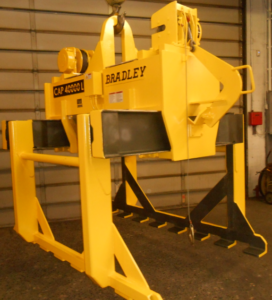
| 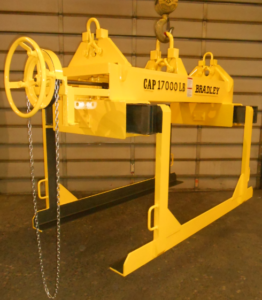 |
Telescoping Lifters
One of the most common types of lifters for handling sheet and plate is the telescoping style. These grabs are usually used for handling stacks of sheet metal; however they are also suitable for handling a single sheet or plate. The leg drive of these lifters can be designed in either a manual or motorized configuration.
In the manual configuration an operator must rotate a hand/chain wheel connected to a shaft, which drives a pair of worm gear reducers to the final rack and pinion drives. This configuration is an excellent choice whenever a power supply is unavailable, or when floor personnel can easily access the lifting zones.
If you are looking to increase process efficiency, whether that be by decreasing cycle time or reducing the need for floor personnel, the configuration is for you. In the motorized configuration the hand/chain wheel is replaced with a brakemotor, which then drives the worm gear reducers to the final rack and pinion drives. The brakemotor that is selected will be matched to integrate with your existing power supply.
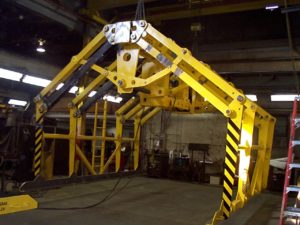 | 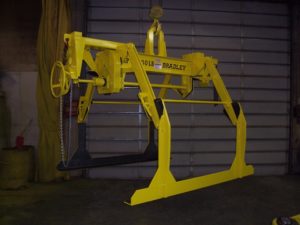 |
Parallelogram Lifters
If aisle spacing is of concern to you, a parallelogram style lifter may be better suited for your application. Similar to the telescoping style, parallelogram lifters are excellent for handling stacks of sheet or plate, however they also require less space to fit between the aisles of stored product.
Like the telescoping style, parallelogram lifters can be designed with either a motorized or manual leg drive configuration. In the motorized configuration a brakemotor drives the central shaft, which then opens and closes the legs with a series of crank linkages. In the manual configuration, the brakemotor is replaced with a hand/chain wheel.
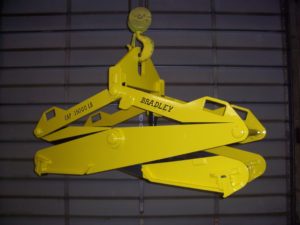
Plate Tongs
If you are handling individual plates, but unable to bring power to the unit, a mechanical tong is an excellent option. This unit type typically features four legs, each with a replaceable grip jaw, to attach to the load.
An automatic latch is provided to alternately hold the legs open and allow them to close with vertical hoist motion, which allows the unit to be operated without assistance from floor personnel.
One thing to be aware of is that a mechanical tong is limited in the range of widths that can be handled. If you are handling plate with a large range of widths, multiple tongs may be required.
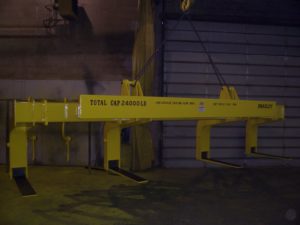
Balanced Fork Lifters
If you are looking for simplicity, a balanced fork lifter is the ideal solution for handling stacks of sheet or plate. These lifters include a series of lifting forks, which can be spaced according to the length of sheet or plate you are handling.
These units include a counterweight so that they hang level when empty, as well as when symmetrically loaded under the lifting bail.
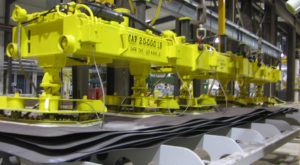
Vacuum Lifters
Vacuum lifters are an excellent solution when you need to handle a single sheet or plate but are unable to get below the load.
These units typically consist of a main upper beam with a series of vacuum cups, spaced to match the range of lengths and widths of you load. The spacing of these vacuum cups can be adjustable if required by your application.
We can design the vacuum lifter to utilize the vacuum source already existing on your crane, or we can include an integrated vacuum pump on the upper beam if a vacuum source is not readily available.
Hopefully, this brief overview of the different types of sheet and plate handling equipment gave you a better understanding of your lifting options. Bradley Applications Engineers are always available to assist you. If you have any questions Click Here to contact us, and we will be glad to answer any of your questions.
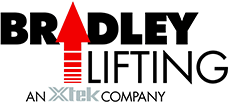
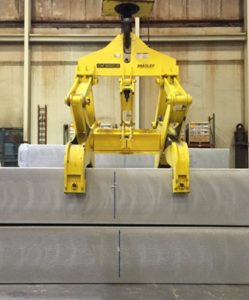 Horizontal Ingot Handling Equipment
Horizontal Ingot Handling Equipment